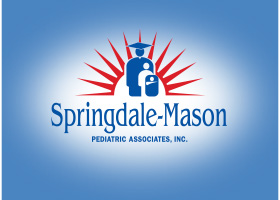Sports Exercise
Golf (Care of the Young Athlete)
View spanish version, share, or print this article.
In the past, golf was seen by many as a leisure activity for people with extra time and money to spend. Today golf is seen as a sport, and one that appeals to younger participants.
While golf is not thought of as a dangerous sport, the long hours of practice and the physical demands of learning and playing the game can lead to injuries. While not all injuries can be prevented, the risk of injuries can be reduced.
The following is a chart from the American Academy of Pediatrics of common golf injuries and an overview of symptoms and treatment. Also included are diagrams of 2 exercises.
Common injuries, symptoms, and treatment
Golf injuries can be divided into those that occur from swinging a club and those that occur from the miles of walking on a golf course. To prevent injury, athletes must have an understanding of the stresses golf puts on the body and must prepare their bodies to handle these stresses.
Most golf injuries develop over time rather than as a result of a single event. It is important to recognize the early signs of an injury and seek treatment before the condition gets worse.
Also, a general warm-up before practicing or playing can help prevent injury. This should consist of exercises that increase circulation to the muscles and stretch the shoulders, back, hips, and legs. It also helps to take warm-up swings with a weighted club (or 2 clubs) and hit practice shots when possible.
Exercises
Rotational stretch and warm-up
This is a dynamic stretch for shoulders, back, and hips and a good warm-up that can easily be done at the golf course or practice range.
-
Stand while holding club behind upper back.
-
Rotate back and forth while keeping feet planted.
-
Try to feel stretch in shoulders, spine, and hips.
Hip/low back flexibility
This exercise improves flexibility in hips and low back; increases rotation and ability to "turn" when hitting ball.
-
Lie on back; cross legs.
-
Use top leg to push opposite knee to floor; keep shoulders flat and pelvis on the floor.
| Injury/Cause | Symptoms/Diagnosis | Treatment/Prevention |
|---|---|---|
| Low back pain Repetitive bending and twisting of the spine can cause compression and shearing forces on lumbar discs; may lead to weakening of disc, disc protrusion, or disc herniation. | (1) Pain, spasm in low back and buttock area; worse with bending, twisting, lifting, and sitting; pain may run down the thigh or leg. (2) Pain is less with standing, walking, arching, or lying down. (3) Clinical evaluation, x-ray and magnetic resonance imaging (MRI) may be needed to confirm diagnosis. | (1) Limit bending, twisting, or any activity that increases pain. (2) Use ice, nonsteroidal anti- inflammatory drugs (NSAIDs). (3) Increase flexibility in hamstrings, hip flexors, hip rotators, and quadriceps. (See "Exercises".) (4) Do core stabilization exercises with emphasis on oblique muscles and rotators of hip/pelvis. (5) Resume play slowly as symptoms allow; start with hitting short irons and build up to longer clubs. |
| Wrist pain Repetitive and forceful cocking and twisting of the wrists that occurs during the normal golf swing. These forces can cause strain to tendons, sprain to the ligaments of the wrist joint, and/or compression to the joint cartilage of the wrist. | (1) Pain, swelling, and stiffness usually felt in the central part of the wrist; popping or clicking may also occur. (2) Pain is usually worse with hitting longer clubs (driver, long irons) or when hitting a "fat" shot. (3) X-ray, MRI, and/or consultation with hand specialist may be needed. | (1) Rest, ice, NSAIDs. (2) Do exercises to establish full motion and strength in wrist. (3) Resume play slowly as symptoms allow. (4) Surgery is rarely needed for wrist problems that are recognized and treated early. |
| Knee pain: Torn meniscus Repetitive squatting, twisting, and walking on uneven surfaces can result in tearing of the cartilage between the femur (thigh bone) and tibia (shin bone). | (1) Pain along sides or back of the knee; swelling, restricted bending, locking or catching. (2) Symptoms are worse with twisting, turning, and squatting. (3) MRI may be needed to confirm diagnosis. | (1) Some meniscal tears heal by avoiding twisting, squatting, or impact activity for 4 to 6 weeks. (2) If the tear is extensive or doesn't heal with rest, arthroscopic surgery may be needed. (3) There are no specific exercises that help with a meniscal tear. (4) Golfers should avoid "pushing through" their symptoms to prevent a small tear from becoming a bigger tear. |
| Knee pain: Patellofemoral pain syndrome (PFSS) Compression and friction on cartilage behind the patella (knee cap) can cause softening and thinning of patellar cartilage. | (1) Gradual onset of pain in the front of the knee or around the knee cap. (2) Symptoms are worse with walking up and down hills and with squatting. (3) Swelling, locking, and/or catching are rare. (4) Examination that addresses risk factors such as foot and knee alignment, flexibility, and strength balances in the lower extremity is needed. | (1) Limit squatting, walking on hills, and any activity that increases symptoms. (2) Practicing on driving range and putting should not adversely impact PFSS. (3) Use ice, NSAIDs. (4) Increase flexibility in hamstrings, quadriceps, and hip flexors. (5) Strengthen hip and knee muscles. (6) Make sure shoes provide proper support and stability. (7) Resume play slowly as symptoms allow. |
Remember
Flexibility, strength, and overall fitness are required to meet the physical demands of golf. Conditioning exercises to meet these demands can improve golf performance as well as reduce injuries.



